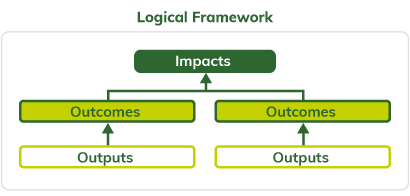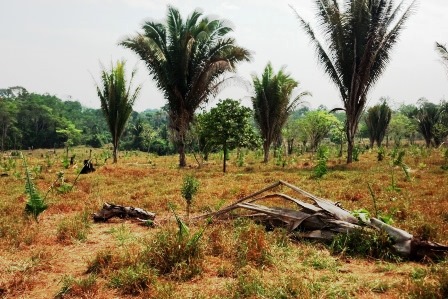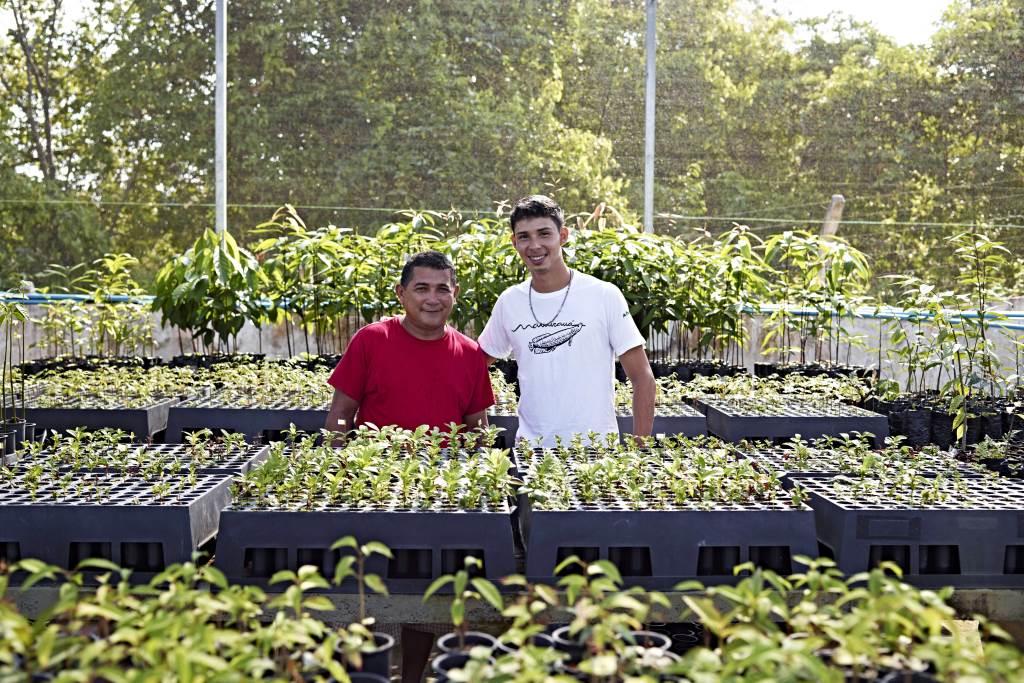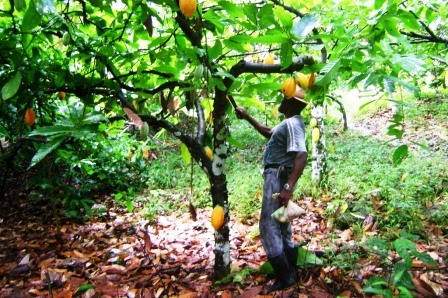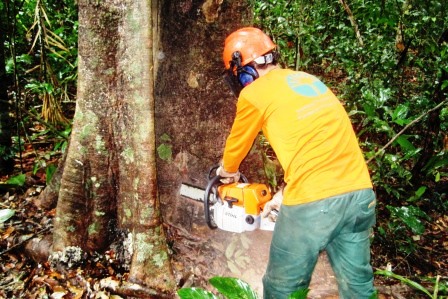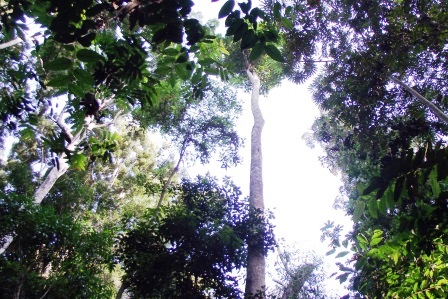Institutional and administrative aspects
Preventing and combating burning and forest fires depend on the integrated action of public bodies from the several Government levels and on civil society mobilization. In 2013, the state of Acre created the Monitoring of the Hydro-meteorological Events Situation Unit, that is, an operational center with the objective of identifying possible occurrences of critical events by daily monitoring of weather, climate, river levels, and hot spots throughout the Acre territory. The information and data received by the platforms are processed, analyzed, and sent by the Situation Unit to CBMAC and to the State Department of Environment for the decision-making process.
The following institutions participated in the management of this situation unit: Pará State Secretariat of the Environment (SEMA), the Technology Foundation of the State of Acre (FUNTAC), through the Central Geoprocessing and Remote Sensing Unit), Climate Change Institute (BMI), CBMAC, State Civil Defense Coordination (CEDEC), Environment Institute of Acre (IMAC), and having the institutions members of the State Environmental Risk Management Commission (CEGdRA) as collaborators. It must be emphasized that the structuring of the Situation Unit had financial support from the Amazon Fund, through the Valorização do Ativo Ambiental Florestal project (Importance of Forest Environmental Asset), which is in an advanced phase in Acre.
Result and impact indicators
Project activities contributed to the component monitoring and control results (2) of the Amazon Fund’s Logical Framework.
Monitoring and Control Component (2)
Specific objective 2.1: Military Fire Brigade of the State of Acre (CBMAC) better structured for monitoring and combating deforestation caused by forest fires and unauthorized burning. The main indicators established for monitoring this objective were:
- Number of trained civilian volunteers (output indicator)
1,815 individuals were trained in techniques to prevent and combat burning and forest fires to create civilian brigades, surpassing the intended goal of 1,000.
- The number of forest fires or unauthorized burning controlled by partners without the CBMAC presence (impact indicator)
In the 2012-2015 period, 1,219 forest fires or unauthorized burning were identified and controlled by trained civilian volunteers and/or equipped by CBMAC. This indicator suggests that partnerships with municipalities for the creation of local fire brigades, as well as the efforts of other participating institutions of the Integrated Plan for Preventing, Controlling and Fighting against Burning and Forest Fires in the State of Acre had positive effects.
- The number of trained officers effectively using the acquired knowledge (impact indicator)
Five CBMAC officers were trained in forensics, auditing, and environmental management in graduate university courses, and all are using the knowledge acquired in their activities in their work.
- Number of hot spots (impact indicator)
In 2015, 5,512 hot spots were recorded in the state of Acre, based on the points identified by the reference satellite (AQUA) of the Burning Database from INPE/CPTEC. As a baseline of this indicator, we had 4,131 hot spots recorded,
considering the average of hot spots in the state of Acre in the ten years before 2012 – the first year of the project implementation. Therefore, it was found that during the period of the project implementation there was a 33% increase in the number of hot spots in Acre.
The growth or reduction in the number of hot spots in Acre is not mainly related to the CBMAC performance, which is an indicator influenced especially by climate issues, with great variation from one year to another due to high rainfall
or drought periods. However, the project also participated in the dissemination of techniques for preventing forest fires and burning, which contributes to the reduction of hot spots. In this context, the indicator is not sufficient for
measuring the effectiveness of the project supported by the Amazon Fund, being, however, a reference to the other project indicators.
- Number of hot spots recorded by CBMAC (impact indicator)
In 2015, 2,052 hot spots were registered and verified in loco by CBMAC in Acre. This verification conducted by CBMAC was necessary to establish whether the hot spots identified by remote monitoring were in fact forest fires or unauthorized burning. Considering that in 2011 562 hot spots were verified, it can be noted that with the project implementation a significant improvement in the verification capacity of the firefighters occurred (over three times higher in the period).
- Number of forest fires or unauthorized burning controlled directly by CBMAC (impact indicator)
In 2015, 1,026 forest fires or unauthorized burning were registered and controlled by CBMAC, with 281 combat actions in 2011 (ground zero). This development proves that the ability to combat forest fires and burning more than tripled during the project implementation period. In absolute terms, in 2015 alone 745 burning or forest fires were controlled, more than in 2011, one year before the beginning of the project supported by the Amazon Fund.
Official information to evaluate the size of the areas burned annually in the Amazon are not yet available. However, it is expected that INPE will provide this information.
Analyzing the actions supported by the project and the monitored results, it is possible to verify that CBMAC is better equipped with operational resources and better articulated with other government agencies to prevent and fight burning and forest fires.
This fact is evidenced especially by the improvement in its ability to verify the nature of the hot spots and expansion of its activity of combating forest fires and burning.
The greater involvement of civil society, through the creation of civil volunteers, was also an important result, which resulted in 411 forest fires or burning controlled by civilian brigades in 2015 alone. This set of indicators suggests that the project was successful by contributing significantly to prevent and combat forest fires and burning, which, in its turn, contributed to reduce vegetation cover loss by fire.
Lessons learned
The good results of the project required the articulation of CBMAC with other institutions involved in combating deforestation as a result of forest fires and burning, such as the National Center for Prevention and Combating Forest
Fires (PREVFOGO), by the Brazilian Institute of Environment and Renewable Natural Resources (IBAMA), the municipal departments of Environment and Environmental institutions in the state of Acre etc., which, working together, were able to develop more effective actions for preventing and combating fires.
Concerning the project impacts, it was identified that some variables may distort the measurement of the achieved results, such as drought periods, which may vary cyclically and cannot be controlled by firefighters. This scenario affects the dynamics of some indicators and thus they should not be analyzed separately.
And the training of volunteers for the creation of fire brigades in rural areas directly reduced deforestation and enhanced environmental awareness about the bad consequences of the indiscriminate burning of forest areas. These additional actions are essential for preventing forest fires and burning, and require the coordination of municipal departments to develop actions of dissemination and to involve local populations.
Sustainability of results
The sustainability of results that will be achieved in the long term with the Amazon Fund support depends on the budgetary conditions of state of Acre, the state responsible for the maintenance of the main equipment purchased
by the project. Moreover, Acre must provide the resources to maintain CBMAC.
A large part of the investments of the project focused on the acquisition of special vehicles, tow-water tanks etc., which require maintenance and, in the future, fleet renewal. In times of fiscal crisis, as experienced at the time by most
of the Brazilian states, due to the severe downturn of the national economy, there are some restrictions on the investment capacity of government agencies. This situation may undermine the results achieved by the project. However, this is not the most likely scenario, given the gradual improvement of the economic agents’ expectations at the beginning of 2017.
The support of local population in rural municipalities, trained to prevent and combat forest fires in their initial stage, is an element that will contribute to reduce burned areas and must continue even after the project completion, since it does not depend on new public funds.
Finally, despite the significant progress already achieved with the Amazon Fund support, it is still possible to further expand the CBMAC responsiveness capacity so it can be structured to identify the origin of hot spots revealed by monitoring systems and it can be adequately equipped with human and material resources to combat all forest fires and unauthorized burning.


